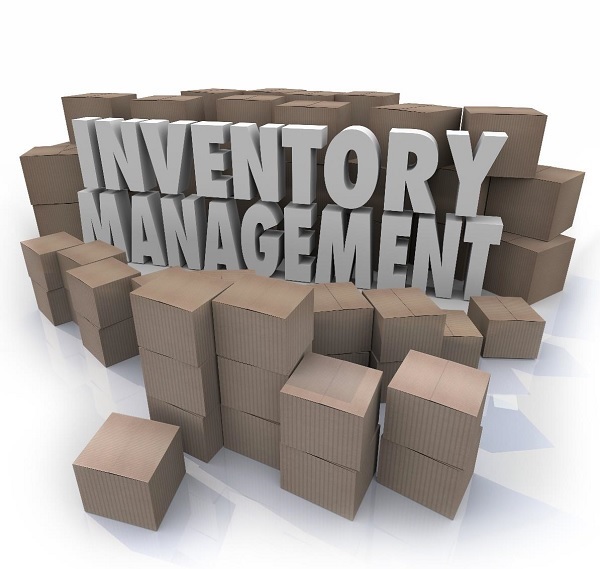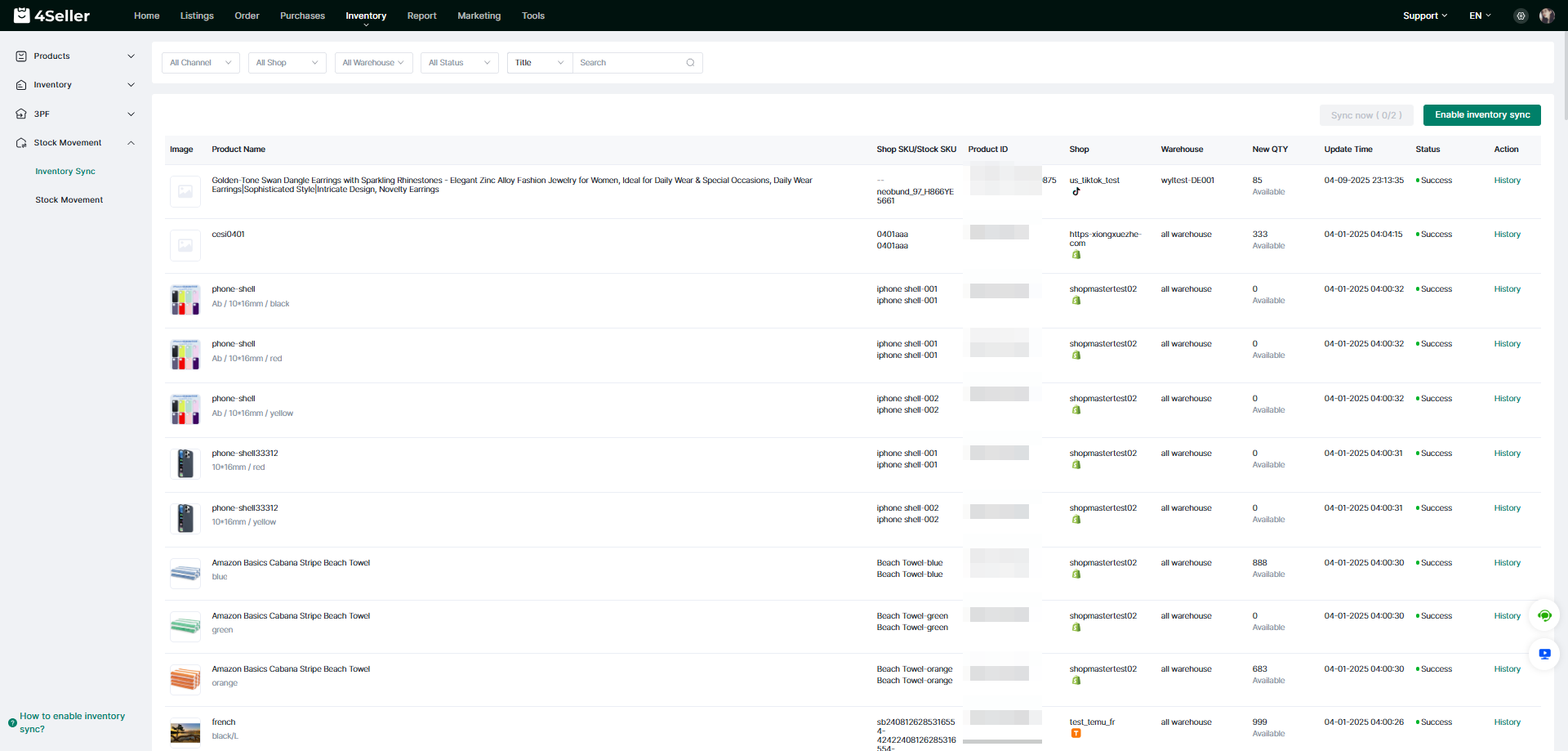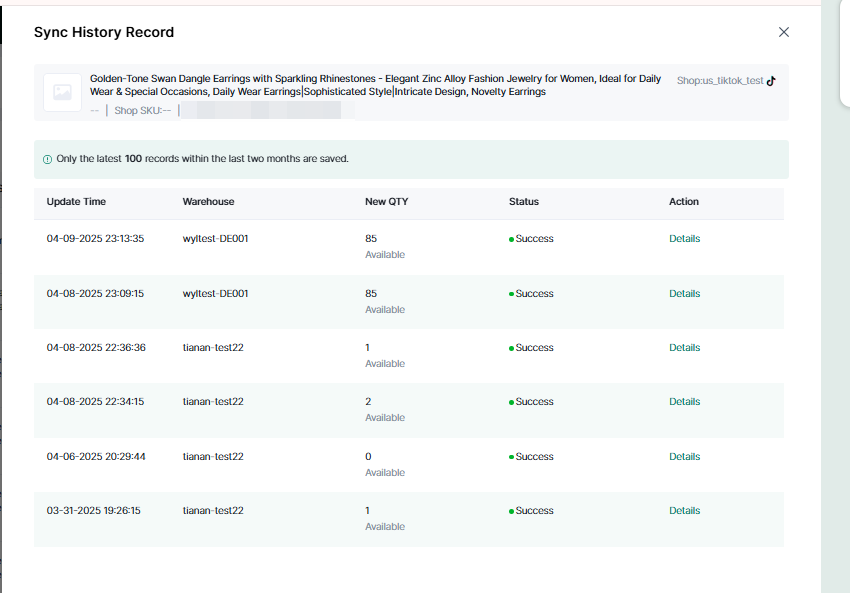Best Practices for Multi-Channel Inventory Management to Enhance Sales Performance
 By Amelia18 Apr,2025
By Amelia18 Apr,2025
1. Inventory Management Challenges in Cross-border E-commerce: Challenges Brought by Multiple Channels
In the current era of rapid development of globalization and the digital economy, the cross-border e-commerce industry has already become a crucial part of international trade. With just a click of the mouse, consumers can easily purchase goods from all over the world, and merchants can also take advantage of this trend to expand into overseas markets and gain a broader customer base.In order to meet the diverse shopping needs of consumers, cross-border e-commerce businesses have successively launched multi-channel sales models, promoting products to different e-commerce platforms, social media, and self-built websites. Although this model brings more sales opportunities, it also makes inventory management increasingly complex, and a series of thorny problems have emerged one after another.
• Inventory Fragmentation: When cross-border e-commerce conducts business on multiple channels, the inventory is also dispersed to the warehouses of each channel. This is like breaking a complete jigsaw puzzle into countless small pieces and scattering them in different corners, and the difficulty of management increases exponentially.
Take cross-border e-commerce sellers who operate simultaneously on multiple platforms such as Amazon, eBay, and Shopify as an example.
Each platform has its own independent warehouse, and the product inventory is stored separately. This not only makes it difficult to centrally control the inventory but also leads to an imbalance in the inventory quantity of the same product across different channels.
In some channels, there is a serious backlog of inventory, occupying a large amount of capital and storage space; in other channels, there are frequent shortages of goods, missing sales opportunities, and seriously affecting the customer experience.
• Demand Uncertainty: The global market is vast and complex, and consumers in different countries and regions have significant differences in culture, economy, consumption habits, etc., which makes market demand fluctuate frequently and is difficult to predict.
For example, in some countries, the demand for certain products will experience explosive growth during specific festivals or seasons; while in other regions, due to cultural differences, consumers may have no interest in these products at all. In addition, the market trends change rapidly, new competitors keep emerging, and consumers' preferences may change at any time, which all pose great challenges to cross-border e-commerce in accurately predicting market demand.
Once the demand prediction is wrong, it will fall into the dilemma of excessive inventory or out-of-stock. Excessive inventory means that a large amount of capital is occupied, storage costs continue to rise, and products may also depreciate due to obsolescence; out-of-stock will directly lead to customer loss, damage the brand image, and in the long run, severely impact the enterprise's market competitiveness.
• Logistics Complexity: The logistics infrastructure, transportation efficiency, and customs policies of different countries and regions are all different, which makes the logistics process full of uncertainties. During transportation, unexpected situations such as bad weather, traffic congestion, and customs inspections may occur, resulting in cargo delays or even losses.
Moreover, under the multi-channel sales model, different channels have different requirements for logistics. Some channels may pay more attention to timeliness and require fast delivery; some channels are more sensitive to logistics costs. This requires cross-border e-commerce to comprehensively consider various factors and balance costs and efficiency when choosing logistics partners and formulating logistics strategies.
However, due to the numerous logistics links and too many uncontrollable factors, it is difficult to achieve perfection. Logistics problems often become a bottleneck restricting the development of cross-border e-commerce and also bring great difficulties to inventory management, because logistics delays may lead to the inability to replenish inventory in a timely manner, thereby affecting sales.
• Data Synchronization Issues: The data generated by multi-channel sales pour in like a tide, and each channel has its own independent data systems for orders, inventory, sales, etc. How to effectively integrate these scattered data and achieve real-time synchronization has become a major technical challenge faced by cross-border e-commerce.
If the data cannot be synchronized in a timely and accurate manner, the situation of inconsistent information will occur. It shows that there is inventory available for sale on one channel, but the actual inventory is insufficient, resulting in overselling; or after an order is shipped on a certain channel, the inventory data of other channels is not updated in a timely manner and still shows that there is stock, causing confusion in subsequent order processing.
This data chaos not only brings great trouble to inventory management but also affects the decision-making of the enterprise, making it impossible for the enterprise to carry out inventory allocation, procurement planning, etc. based on accurate data, and ultimately affecting the operation efficiency and economic benefits of the enterprise.
2. 4Seller ERP: A Powerful Tool for Multi-channel Inventory Management
Facing the challenges of multi-channel inventory dispersion and data asynchrony, cross-border e-commerce sellers urgently need an intelligent tool to achieve global control - 4Seller ERP was born. As a free e-commerce ERP developed by Dianxiaomi specifically for European and American sellers, since its launch in September 2023, it has helped more than 15,000 TikTok Shop US sellers reduce costs and improve efficiency, winning widespread trust.
Why choose 4Seller ERP?
Centralized Control of Inventory across All Channels It deeply connects with mainstream platforms such as TikTok Shop, Amazon, and Shopify, as well as logistics providers such as USPS, UPS, and FedEx, and synchronizes data in real time, completely saying goodbye to inventory fragmentation.
Clear View of Inventory Dynamics No matter where the goods are stored, they can be tracked in real time through a unified panel, and resources can be intelligently allocated to avoid out-of-stock or overstocking.
A Strong Backing for Efficient Operation Through automated processes and accurate data analysis, 4Seller ERP has become the core tool for cross-border sellers' inventory management, escorting business growth.
3. Analysis of the Core Functions of 4Seller ERP
3.1 Real-time Inventory Synchronization
Inventory synchronization, simply put, is to integrate and uniformly update the inventory data of goods scattered in different channels and different warehouses to ensure that the latest and most accurate information can be obtained when checking the inventory on any sales platform or store. 4Seller ERP performs excellently in this regard, and it can achieve the automatic synchronization of inventory data of multiple platforms and multiple stores. Sellers only need to customize and set inventory synchronization rules in the system to keep the inventory data consistent in real time.
Take a cross-border e-commerce seller as an example. This seller has opened stores on multiple platforms including Shopify, TikTok Shop, and Amazon, selling fashionable clothing. In the past, due to the inability to synchronize inventory data of various platforms in real time, overselling often occurred, resulting in a decline in customer satisfaction.
After using 4Seller ERP, the seller set according to their own business needs that when clothing is received into or dispatched from the warehouse, the inventory data of relevant platform stores will be automatically updated immediately; when clothing is sold in a certain store, the inventory of other stores will also be reduced accordingly.
For example, when 10 dresses are sold in the Shopify store, 4Seller ERP will quickly synchronize this sales information to the stores of other platforms and update the inventory data of the warehouse at the same time, keeping the inventory data of all channels consistent. In this way, the seller does not need to switch between various platforms to manually update the inventory, which greatly saves time and labor costs, effectively avoids the occurrence of overselling, and improves the operation efficiency of the store and customer satisfaction.
3.2 Setting Inventory Push Quantity
In cross-border e-commerce inventory management, accurately controlling the inventory quantity is of great importance, and setting the inventory push quantity and out-of-stock settings are important means for 4Seller ERP to achieve this goal. When setting inventory synchronization rules, sellers can decide according to the actual situation whether to push the available inventory quantity in the warehouse or the in-stock inventory quantity to the store.
At the same time, they can also set out-of-stock rules, that is, when the available inventory of a product is lower than a certain set inventory quantity, the inventory data of the specified store within the rules will be changed to 0, effectively preventing overselling.
Suppose a seller stores 1000 smartwatches in Warehouse D, that is, there are 1000 in-stock inventory quantities. These watches are sold simultaneously in Store A and Store B on Shopify and Store C on TikTok.
The seller sets to push the available inventory quantity to the store through 4Seller ERP. At this time, if there are 100 unprocessed orders in Store A on Shopify, then the available inventory quantity of smartwatches becomes 900, and the online inventory quantities displayed in the three stores A, B, and C are also updated to 900. This setting method enables the seller to dynamically adjust the inventory quantity displayed in the store according to the order processing situation, further reducing the risk of overselling. The out-of-stock setting is also very practical. When the available inventory quantity of smartwatches in Warehouse D is less than or equal to 5, the system defaults to pushing 0 inventory to the specified store, avoiding the overselling problem caused by multiple stores receiving orders simultaneously when the inventory quantity is too low.
By reasonably setting the inventory push quantity and out-of-stock rules, sellers can manage inventory more accurately, ensure that the inventory is always at a reasonable level, meet market demand, and avoid losses caused by inventory backlog or out-of-stock, providing a strong guarantee for the stable development of cross-border e-commerce business.
3.3 Support for Multi-warehouse Inventory Synchronization
In cross-border e-commerce business, inventory storage often involves multiple warehouses, including sellers' own warehouses, third-party warehouses, overseas warehouses, and FBA warehouses. Different types of warehouses have their own characteristics in logistics distribution, cost control, etc., but they also bring great challenges to inventory management.
4Seller ERP fully considers this industry pain point and comprehensively supports the inventory synchronization of various warehouses such as self-owned warehouses, third-party warehouses, overseas warehouses, and FBA warehouses, helping sellers achieve unified management of inventory across all channels.
3.4 Viewing Inventory Linkage Records
In the process of multi-channel inventory management, it is crucial to track inventory information in real time and promptly discover and solve inventory synchronization problems. The function of viewing inventory linkage records provided by 4Seller ERP provides convenience for sellers to achieve this goal.
Sellers only need to perform simple operations to browse the inventory linkage records on the full page and have a clear understanding of the synchronization situation of inventory data. Sellers can trace the change history of inventory data at any time, truly achieving order traceability and process monitoring.
Whether in daily operations or when dealing with complex inventory allocation tasks, this function can help sellers promptly grasp inventory dynamics, make scientific decisions, and effectively avoid various problems caused by inaccurate inventory information, escorting the smooth development of cross-border e-commerce business.
4. How to Choose a Suitable Inventory Management ERP
In the environment of multi-channel operation in cross-border e-commerce, choosing a suitable inventory management ERP is of great importance, as it is directly related to the operation efficiency and economic benefits of the enterprise. The following are the key factors to be considered when choosing an inventory management ERP, and 4Seller ERP has demonstrated significant advantages in these aspects.
4.1 Function Completeness
An excellent inventory management ERP should have comprehensive and powerful functions to meet the complex needs of multi-channel inventory management in cross-border e-commerce.
In addition to the functions mentioned above such as real-time inventory synchronization, setting inventory push quantity, supporting multi-warehouse inventory synchronization, and viewing inventory linkage records, it should also cover function modules such as procurement management, sales management, and data analysis. The procurement management function can help sellers automatically generate purchase orders according to inventory status and sales forecasts, communicate efficiently with suppliers, and ensure timely replenishment of goods; the sales management function can achieve rapid order processing, shipping tracking, and customer relationship management, improving customer satisfaction; the data analysis function can deeply mine a large amount of inventory and sales data, providing sellers with accurate market trend analysis, sales forecasts, etc., helping sellers make scientific decisions.
4Seller ERP performs outstandingly in terms of function completeness. It not only provides the above-mentioned core inventory management functions but also integrates all-round SaaS services such as product listing, order management, and customer service, forming a complete e-commerce operation management system that can meet the various business needs of cross-border e-commerce sellers in multi-channel operations and truly achieve one-stop management.
4.2 Price
Cost control is a key link in enterprise operation. For cross-border e-commerce sellers, when choosing an inventory management ERP, they need to comprehensively consider the price of the software and their own budget.
Different ERP systems have different charging models. Some are sold in a one-time purchase way, some are charged according to the subscription method, and some are charged according to function modules, the number of users, etc. When choosing, sellers should select an ERP system with high cost performance according to their own business scale and development plan.
A prominent advantage of 4Seller ERP is that it is free to use. All the connected e-commerce platforms and logistics service providers, as well as the provided functions, are free for domestic and foreign sellers to use. This is undoubtedly a huge benefit for small and medium-sized cross-border e-commerce sellers with relatively tight funds, greatly reducing the operation cost of the enterprise and enabling sellers to enjoy professional and efficient inventory management services at a relatively low cost.
4.3 Security
In the digital era, data security is of vital importance. The inventory data, order data, customer information, etc. of cross-border e-commerce sellers are all stored in the ERP system. Once the data is leaked or damaged, it will bring huge losses to the enterprise. Therefore, choosing an inventory management ERP with a high level of security is the key to ensuring the security of enterprise data.
A secure ERP system should have a complete data encryption mechanism to prevent data from being stolen or tampered with during transmission and storage; it should have strict user permission management functions to ensure that only authorized personnel can access and operate sensitive data; at the same time, it should also have data backup and recovery functions to deal with sudden data loss or damage situations.
4Seller ERP has taken multiple safeguard measures in terms of security. Like large e-commerce platforms such as Amazon and TikTok Shop, it will go through strict reviews and audits to ensure the security and compliance of third-party service tools. The data interaction between 4Seller and the platform is carried out through the official API data interface, which can completely avoid the problem of account association.
As the parent company of 4Seller, Dianxiaomi attaches great importance to the confidentiality and security of user data, files user information with relevant industries and departments, and ensures that user data is not leaked from all aspects, allowing sellers to use it with confidence.
4.4 Data Docking Capability
In the process of multi-channel sales in cross-border e-commerce, it involves data interaction between different systems such as multiple e-commerce platforms, logistics providers, and warehouses. Therefore, the inventory management ERP needs to have strong data docking capabilities, be able to seamlessly connect with various mainstream e-commerce platforms, logistics systems, and warehouse management systems, and ensure the real-time and accurate transmission of data.
Only in this way can the unified management of multi-channel inventory and the efficient coordination of business processes be achieved. 4Seller ERP has deeply connected with mainstream e-commerce platforms in Europe and the United States such as TikTok Shop, Amazon, and Shopify, as well as well-known local logistics providers in the United States such as USPS, UPS, and Fedex.
At the same time, it has also accessed large overseas third-party warehouses such as GoodCang and the well-known domestic JiFeng WMS system. This extensive and in-depth data docking capability enables 4Seller ERP to easily integrate multi-channel data, break down information silos, provide sellers with comprehensive and accurate inventory and business data, and help sellers achieve efficient multi-channel inventory management.
5. In Conclusion
In the complex environment of multi-channel sales in cross-border e-commerce, inventory management is like a difficult battle, full of various challenges. Inventory fragmentation, demand uncertainty, logistics complexity, and data synchronization issues, etc., constantly test the operation ability of sellers. If there is the slightest carelessness, it may lead to inventory backlog or out-of-stock, bringing huge economic losses to the enterprise.
However, with its powerful functions and excellent performance, 4Seller ERP has become a powerful weapon for cross-border e-commerce sellers to deal with these challenges. It not only achieves real-time inventory synchronization, accurately sets the inventory push quantity, but also comprehensively supports multi-warehouse inventory synchronization and enables convenient viewing of inventory linkage records. For cross-border e-commerce sellers who are troubled by multi-channel inventory management, it is advisable to try using 4Seller ERP. It is believed that it will bring unexpected improvements to your business.
- 09 Apr,2025
- 09 Apr,2025








